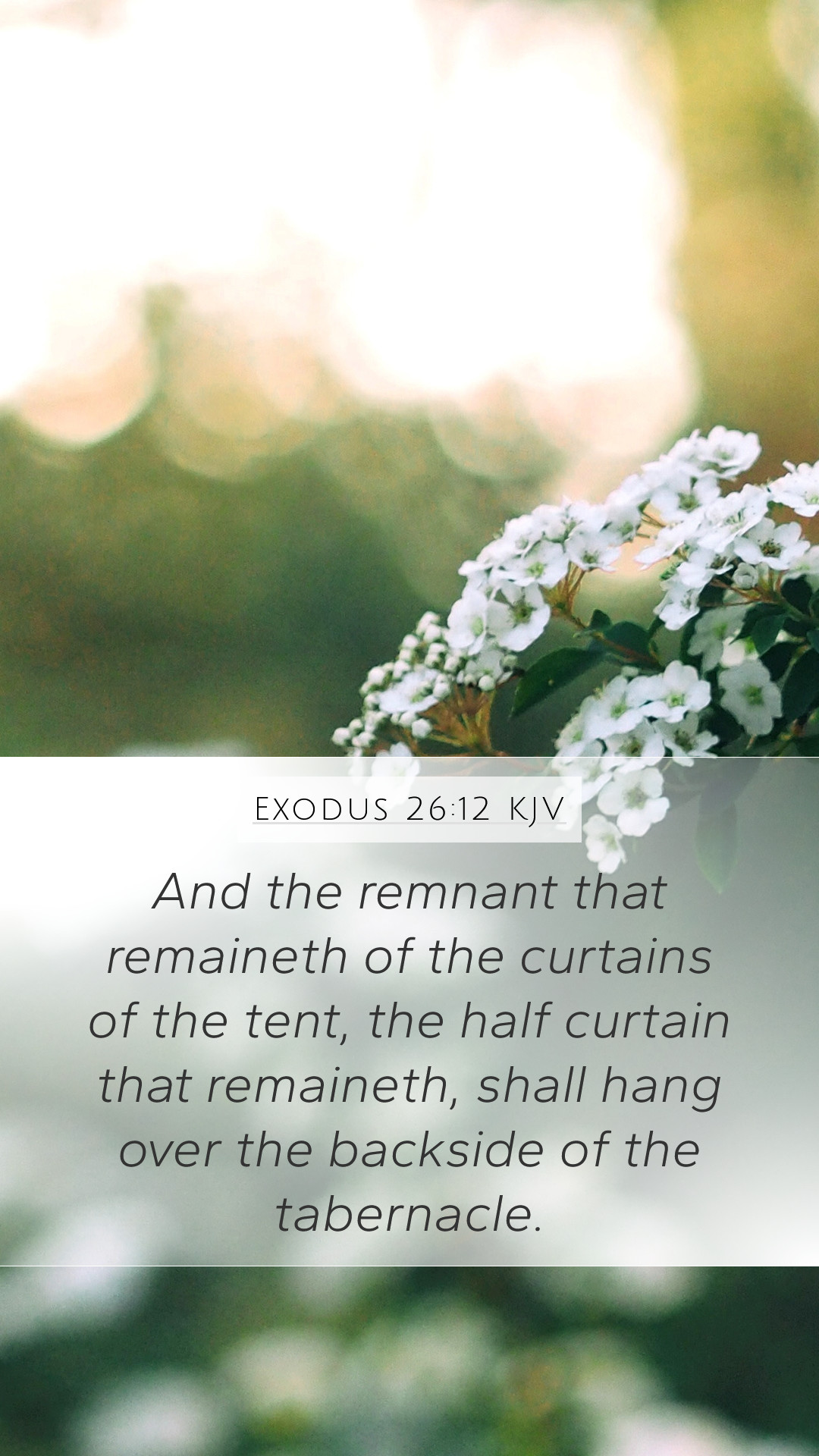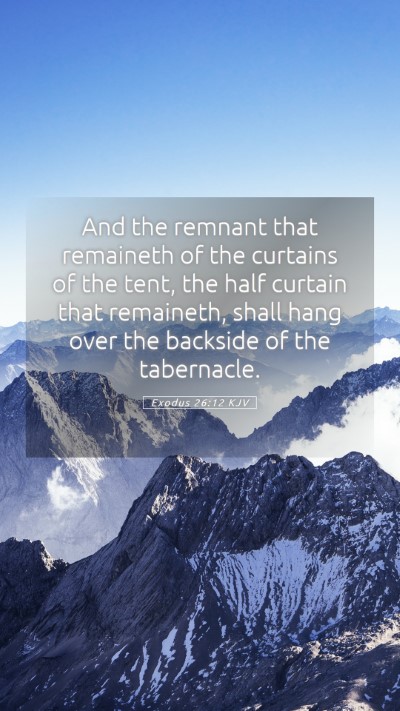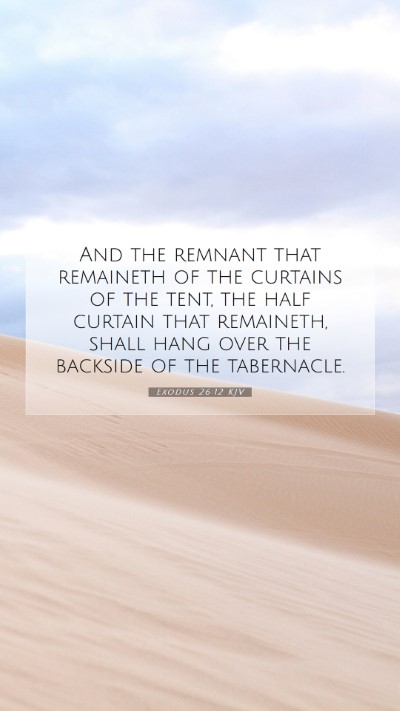Understanding Exodus 26:12
In Exodus 26:12, we find a significant passage that reveals the intricacies of the Tabernacle's construction, emphasizing both physical and spiritual elements. The verse states:
"And the remnant that remains of the curtains of the tent, the half curtain that remains, shall hang over the back of the tabernacle."
Bible Verse Commentary
This verse serves as a reminder of God's detailed instructions and the importance of obedience in building a place of worship. The construction of the Tabernacle is a meticulous process, and this verse highlights how specific elements serve crucial functions in the overall design.
Key Insights
- Symbolism of the Tabernacle: The Tabernacle symbolizes God's dwelling among His people, illustrating the concept of divine presence.
- Material Significance: The "curtains" reference the various materials used, which signify beauty and holiness, representing the heavenlies.
- Functionality: The arrangement of the curtains ensures that the Tabernacle remains appealing yet practical, suggesting that worship combines both reverence and order.
Historical Context
The Tabernacle was constructed during the Israelites' exodus from Egypt, serving as a portable sanctuary. This highlights the theme of journeying with God, emphasizing His guidance during transitions.
Biblical Exegesis
The Bible verse can be viewed through various lenses of interpretation:
- God’s Presence: The Tabernacle housed the Ark of the Covenant, symbolizing God’s covenant with His people.
- Preparation for Worship: The elaborate design necessitates a proper approach to worship, underlining the importance of preparation and reverence.
- Community Instruction: This verse also hints at the communal aspect of worship, where every Israelite plays a part in its maintenance and significance.
Application of the Verse
For modern believers, Exodus 26:12 encourages us to consider how we prepare our hearts and spaces for worship:
- How can we create environments that honor God’s presence?
- What practical steps do we take in our lives to ensure that worship is a communal experience?
- Are we attentive to the details in our worship practices, reflecting God's holiness?
Cross References
This verse relates well to other scriptural passages that highlight worship and divine instructions:
- Exodus 25:8-9: “And let them make me a sanctuary; that I may dwell among them.”
- Exodus 40:2: “On the first day of the first month shalt thou set up the tabernacle of the tent of the congregation.”
- Leviticus 16:2: “...For I will appear in the cloud upon the mercy seat.”
Conclusion
Exodus 26:12 serves as a vital component in understanding the nature of the Tabernacle and the worship of God in Israelite culture. The verse invites us to delve deeper into biblical studies, helping us gain profound meaning of Bible verses and insights into scripture.
Further Exploration
To enrich your understanding of this verse and more, consider engaging in:
- Online Bible Study: Join groups that explore intricate passages like Exodus 26.
- Bible Study Guides: Use tools to understand historical contexts and cultural significances.
- Discussion on Bible Study Topics: Share insights regarding worship practices and community in the Old Testament.
For a comprehensive understanding, delve into questions such as:
- What does Exodus 26:12 reveal about God's desire for worship?
- How does this passage reflect the themes of obedience and reverence in scripture?
Utilizing these insights, believers can navigate their spiritual journeys with a deeper understanding of Scripture, enriching their relationship with God.


